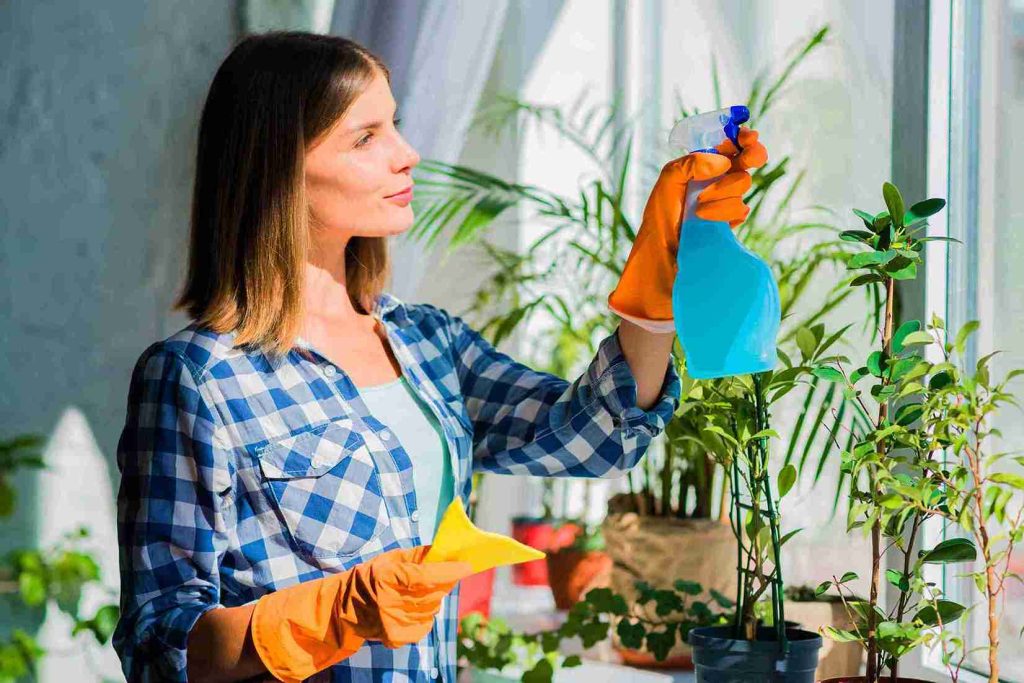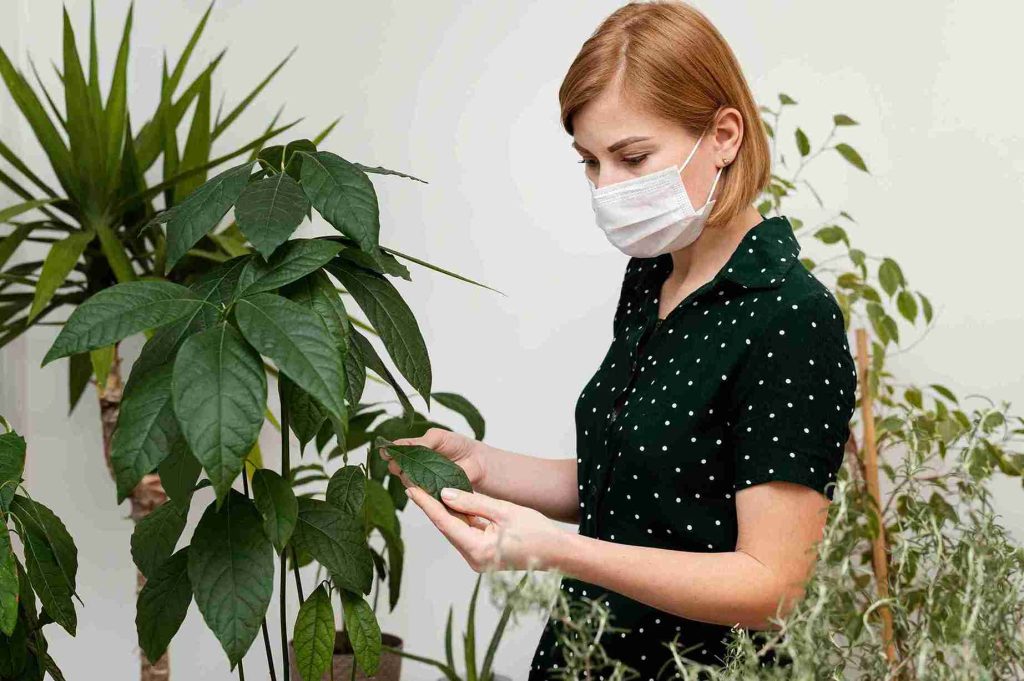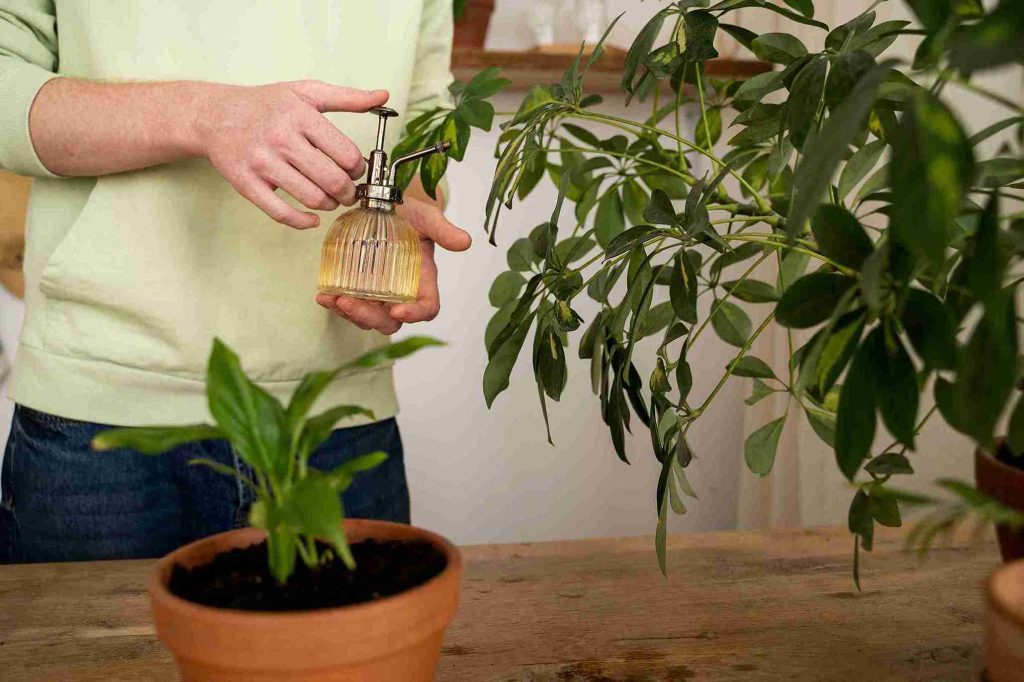Dealing with fungus gnats in indoor plants can be really frustrating. I’ve had my fair share of these tiny pests ruining my plants. At first, I didn’t know what they were or how to get rid of them. I noticed little flies buzzing around the soil, and my plants looked unhealthy. After some research, I discovered they were fungus gnats, and they can cause a lot of damage to indoor plants if not dealt with.
Over time, I found some easy and natural ways to prevent fungus gnats from taking over my plants. I learned how to keep the soil dry, avoid overwatering, and use simple traps to catch the little bugs. Now, my plants are happier, and the gnats stay away.
If you’re struggling with fungus gnats in indoor plants, don’t worry! In this article, I’ll share how to get rid of gnats in plants. Let’s get started!

How to Prevent Fungus Gnats in Indoor Plants
Fungus gnats are tiny pests that love to invade indoor plants. I’ve struggled with them in the past, and they can be very annoying. These little insects fly around, hover over plants, and lay eggs in the soil. The larvae feed on plant roots, which can damage your plants. I’ve learned several ways of how to get rid of gnats in my plants, and I’d like to share those with you-
How to Get Rid of Gnats in Plants: Proven Tips for Indoor Plants
A fungus gnat infestation can be a real headache when you’re caring for indoor plants. These tiny bugs love to hover around your plants and lay their eggs in the soil. The larvae feed on plant roots, which can cause damage and stunt growth.
1. Let the Soil Dry Out Between Waterings
Overwatering is one of the easiest ways to invite fungus gnats into your home. When the soil stays too wet, it creates the perfect breeding ground for these pests. I used to water my plants daily, but I realized that letting the soil dry out between waterings helps a lot.
- I let the top 1-2 inches of soil dry completely before watering.
- I checked the moisture level with my finger to be sure.
- I watered less frequently, especially during the colder months.
This simple change helped control fungus gnats a lot. They thrive in moist environments, so drying out the soil made it less inviting for them. Not only did this help with pest control, but it also improved the health of my plants. By reducing moisture, I gave my plants the right conditions to grow strong and healthy.
2. Use Sticky Traps to Catch Adult Fungus Gnats
One of the best things I did to fight fungus gnats was to use sticky traps. These little insects fly around my plants, so I wanted a way to catch them. The yellow sticky traps are perfect because they attract fungus gnats, and the bugs get stuck on them.
- I placed the traps near the top of my plant pots.
- The adult gnats are attracted to the yellow color and get stuck.
- I replaced the traps every couple of weeks as needed.
Using sticky traps helped me reduce the number of adult gnats. It also made it easier for me to keep track of how bad the infestation was. This simple and non-toxic method worked really well in keeping the gnat population in check. The traps were easy to use and didn’t harm my plants, which was a huge plus.
3. Improve Drainage to Prevent Fungus Gnats
Improving the drainage in my plant pots was another key step in preventing fungus gnats. If water sits at the bottom of the pot, it creates a moist, stagnant environment where gnats can thrive. I started paying more attention to drainage to avoid these conditions, which is an essential part of effective fungus gnats treatment.
- I made sure all my pots had drainage holes at the bottom.
- I added a layer of gravel or rocks to improve drainage.
- I used well-draining soil that dries quickly after watering.
With better drainage, excess water could escape from the pot. This helped keep the soil drier and less attractive to gnats. It also prevented my plants from suffering from root rot due to too much water. Improving drainage made a big difference in keeping fungus gnats away while also keeping my plants healthy.

4. Use Biological Control with Beneficial Nematodes
I wanted a more natural way to handle my fungus gnat problem, so I decided to try beneficial nematodes. These tiny creatures are the natural predators of gnat larvae. I found them online, and after reading about their benefits, I gave them a try in my plant soil.
- I bought beneficial nematodes from a garden supply store.
- I mixed them with water and applied the mixture to the soil.
- The nematodes killed the larvae, stopping the infestation.
Beneficial nematodes were effective and easy to use. I didn’t need to worry about using harmful chemicals on my plants. Plus, they worked quickly and efficiently to reduce the gnat larvae population. I loved how eco-friendly this solution was and how well it worked.
5. Replace the Top Layer of Soil
After some time, I noticed that the top layer of soil was full of gnat larvae. So, I decided to replace the top 1-2 inches of soil. This simple action helped get rid of many of the larvae that were living in the soil.
- I carefully removed the top layer of soil in each pot.
- I replaced it with fresh, dry soil.
- This disrupted the larvae and prevented them from maturing.
Changing the top layer of soil gave me a fresh start and helped reduce the gnat population. It was a fast and easy fix. I kept the soil dry afterward, which made it harder for new gnats to lay eggs. This method helped keep my plants healthy and pest-free.
6. Use Neem Oil to Treat the Soil
Neem oil is another great solution for preventing fungus gnats. It’s a natural product that works as both a pesticide and a fungicide. I started using neem oil to treat my plant soil, and it helped reduce the gnat problem significantly.
- I mixed neem oil with water according to the instructions.
- I poured the mixture into the soil around my plants.
- Neem oil killed the larvae and helped prevent future infestations.
Neem oil is safe for plants and pets, making it a perfect choice for my home. I loved how it worked without harming my plants. It also helped prevent other pests, like aphids, which was an added benefit. Regular use of neem oil kept the gnats away and kept my plants thriving.

7. Keep Your Plant’s Environment Clean
I found that keeping the area around my plants clean was just as important as caring for the plants themselves. Fungus gnats love to hide in decaying plant matter, so removing fallen leaves and other debris helped reduce their hiding spots.
- I cleaned up dead leaves, stems, and debris around the plant pots.
- I wiped down the edges of the pots to remove any dirt buildup.
- I made sure the area was free from rotting plant material.
A clean environment discouraged fungus gnats from settling around my plants. It also helped keep other pests away, like mold or mildew. Regular cleaning became part of my plant care routine and helped keep the gnats in check. By maintaining a clean area, I made it harder for pests to infest my indoor garden.
8. Don’t Overcrowd Your Plants
I’ve learned that overcrowded plants can create the perfect environment for fungus gnats. When plants are too close together, they trap moisture and reduce airflow. This makes it easier for gnats to thrive. I started spacing my plants out to give them enough room.
- I made sure there was enough space between each plant.
- I moved plants that were too close together to another area.
- I kept the area well-ventilated to prevent moisture buildup.
By giving each plant more space, I helped improve air circulation. This reduced humidity and made it harder for gnats to survive. Proper spacing also allowed each plant to thrive by getting enough light and air. I found that this simple adjustment helped keep my plants healthy and free of pests.
9. Avoid Using Organic Matter in the Soil
I used to add organic compost to my soil, but I realized it attracted fungus gnats. Organic matter, like compost, creates a moist and rich environment that gnats love. So, I stopped using it in my pots and switched to well-draining soil instead.
- I replaced the compost with sterilized potting soil.
- I made sure the soil didn’t stay too rich or too moist.
- I avoided using organic materials that could decompose and attract pests.
Switching to well-draining soil made a big difference. It kept the soil drier and less inviting to fungus gnats. My plants also did better with the new soil, as it didn’t stay too wet or dense. Avoiding organic matter helped keep my plant care routine simple and effective.
10. Quarantine New Plants
Whenever I buy new plants, I make sure to quarantine them before introducing them to my other plants. This step helps me avoid bringing in fungus gnats or other pests. I keep the new plants in a separate area for a few weeks before adding them to my collection.
- I keep new plants in a different room for 1-2 weeks.
- I check them carefully for any signs of pests.
- If I see gnats or eggs, I treat the plant before moving it inside.
By quarantining new plants, I prevent pests from spreading to my other plants. This practice is a simple yet effective way to ensure my indoor garden stays pest-free. It’s better to be cautious than risk an infestation. I now make quarantine a standard part of my plant care routine.
Conclusion
Dealing with fungus gnats can be frustrating, but I’ve found several ways to keep them under control. By adjusting my watering habits, using sticky traps, improving drainage, and trying natural methods like neem oil and beneficial nematodes, I’ve been able to prevent infestations. Keeping a clean environment and quarantining new plants also help. Fungus gnats don’t have to ruin your plants, and with these tips, you can keep your indoor garden healthy and thriving.

FAQ
How to prevent fungus gnats in indoor plants naturally
Let the soil dry before watering to stop gnats from breeding. Use sand or cinnamon on top of the soil to repel them.
Fungus gnat prevention methods for houseplants
Avoid overwatering, improve airflow, and use sticky traps to catch gnats. Adding beneficial nematodes helps kill gnat larvae in the soil.
How to stop fungus gnats in soil
Let the topsoil dry completely before watering again. Mix diatomaceous earth or neem oil into the soil to kill larvae.
Natural ways to prevent fungus gnats
Use sand, cinnamon, or neem oil to keep gnats away. Keep the soil dry and add sticky traps to catch adults.
How to prevent fungus gnats in winter
Water less in winter because plants need less moisture. Keep the soil surface dry to stop gnats from laying eggs.
Fungus gnat prevention tips for indoor plants
Use well-draining soil, and let the top layer stay dry. Add sticky traps and neem oil to kill adult gnats and larvae.
How to prevent fungus gnats without chemicals
Dry the topsoil, use sand, and set sticky traps. Introduce nematodes or mosquito bits to kill larvae naturally.
Fungus gnat prevention for houseplants
Water less often and improve drainage to stop gnats from breeding. Place sticky traps nearby to catch adult gnats.
Fungus gnat prevention with cinnamon
Sprinkle cinnamon powder on the soil to kill fungus and gnats. It stops gnat larvae from growing and protects plant roots.
How to prevent fungus gnats in potting soil
Use sterilized potting soil and add sand on top. Keep the soil dry and water plants from the bottom.
Fungus gnat prevention using sand
Spread a thin layer of sand over the soil surface. It stops gnats from laying eggs and keeps larvae from hatching.
How to prevent fungus gnats in tropical plants
Water is only needed when needed, and airflow around plants is increased. Use sticky traps and neem oil to keep gnats away.
Fungus gnat prevention with sticky traps
Place yellow sticky traps near plants to catch adult gnats. This stops them from laying eggs and reduces their numbers.
How to prevent fungus gnats in overwatered plants
Let the soil dry completely and remove excess moisture. Add sand or perlite to improve drainage and prevent gnats.
How to prevent fungus gnats in moisture-loving plants
Use well-draining soil and bottom water plants. Keep airflow strong and add sand to prevent gnats’ eggs.
Fungus gnat prevention with hydrogen peroxide
Mix one part hydrogen peroxide with four parts water. Pour it into the soil to kill gnat larvae instantly.
Fungus gnat prevention with bottom watering
Water plants from the bottom to keep the surface dry. This stops gnats from laying eggs and growing in the soil.


